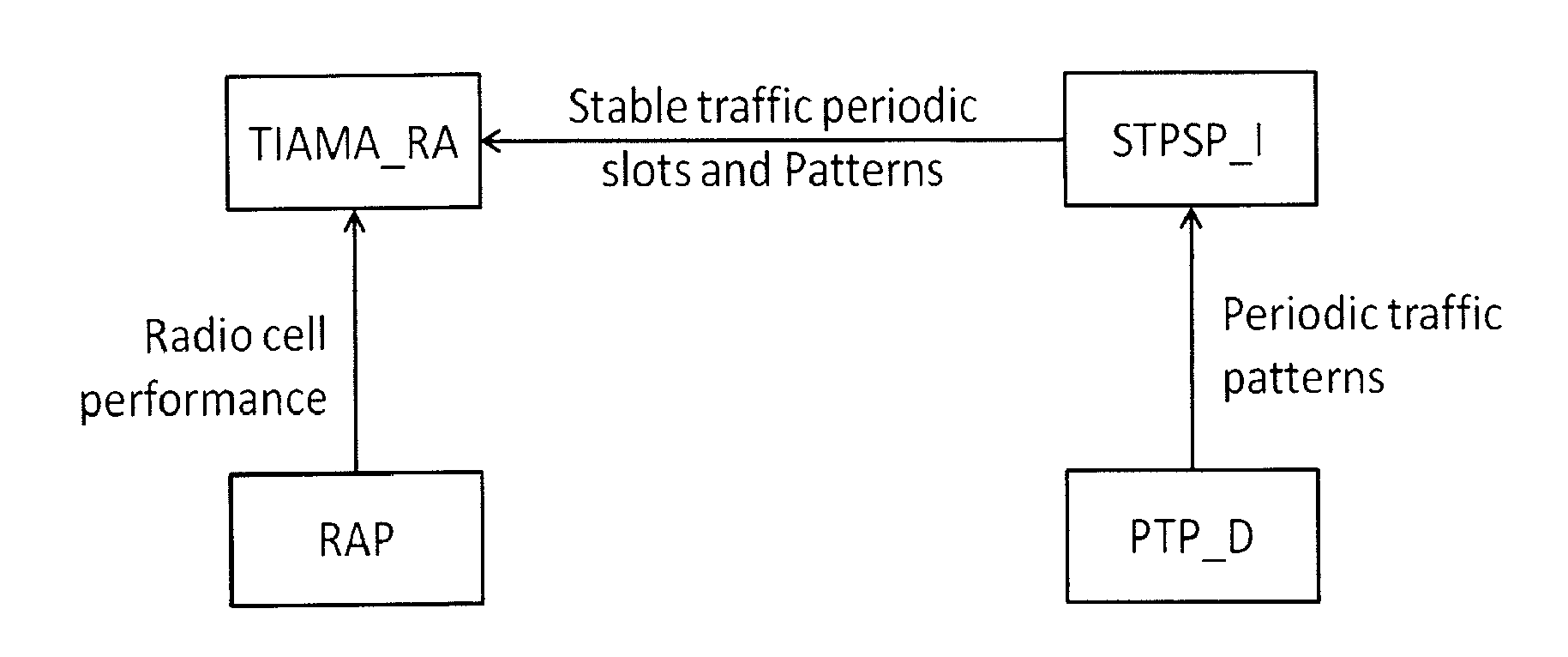Adaptive traffic and interference aware radio resource management
a radio resource management and traffic technology, applied in the field of radio resource management, can solve the problems of network maintenance, inability to accommodate sudden and transient increase in traffic, and high cost and complexity of approaches
- Summary
- Abstract
- Description
- Claims
- Application Information
AI Technical Summary
Benefits of technology
Problems solved by technology
Method used
Image
Examples
Embodiment Construction
[0054]As illustrative example, and with reference to FIG. 1, a set of interfering cells C1, . . . , CN, respectively, are covered by base stations BS1, . . . , BSN that share common time and frequency resources. The radio resources usage of these base stations BS1, . . . , BSN is managed and controlled by a cells controller CC. As an exemplification,:[0055]BS1, . . . , BSi (wherein i is an integer equal or greater than 1) cover a residential zone wherein activity is high in the evening (for example, workers come back to home) and lower during day; whereas[0056]BSi+1, . . . , BSN (wherein i is less than N) cover a business area wherein traffic activity is dominant during work day.
[0057]Rather than considering equal sharing of radio resources among Base stations BS1, . . . , BSN, associated to a downlink sub-frame, a variable RRM in function of traffic demands and relative QoS in each cell Ci is adopted. Otherwise, high traffic demands in late hours for “residential” BS1, . . . , BSi ...
PUM
 Login to View More
Login to View More Abstract
Description
Claims
Application Information
 Login to View More
Login to View More - R&D
- Intellectual Property
- Life Sciences
- Materials
- Tech Scout
- Unparalleled Data Quality
- Higher Quality Content
- 60% Fewer Hallucinations
Browse by: Latest US Patents, China's latest patents, Technical Efficacy Thesaurus, Application Domain, Technology Topic, Popular Technical Reports.
© 2025 PatSnap. All rights reserved.Legal|Privacy policy|Modern Slavery Act Transparency Statement|Sitemap|About US| Contact US: help@patsnap.com



